Cap Badges of the Canadian Armed Forces Pipes and Drums
by Mark Passmore
A while back, on a military collecting social media site, a new variation of cap badge the CFB Borden Pipes and Drums Badge was posted. A member of the site stated “it looks like Pipers are taking liberties again.” This is to share a little history on the design and adoption of these badges and to address the specific comment.
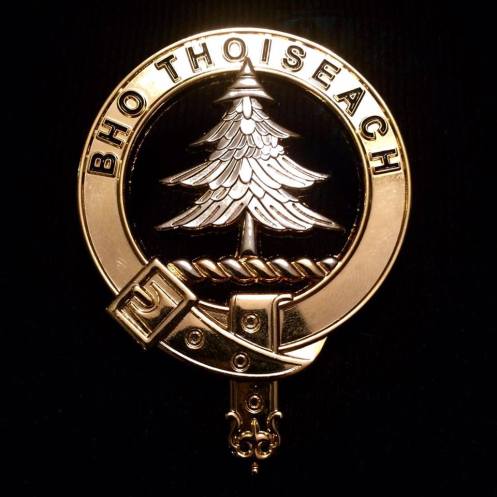
Current Badge of the CFB Borden Pipes and Drums 2012. “Bho Thoisesch” is Gaelic for “In the Beginning”. This is the base motto (usually in Latin “E Principio”) for CFB Borden
I understand that in the Regular Force the Black Watch of Canada (Royal Highlanders) and the Canadian Guards were the only ones that had “proper” authorization for their pipe bands’ cap badge (since then, the Regular Force battalions of the Black watch were disbanded and the Canadian Guards were reduced to “nil strength”). This authorization stemmed from the heraldic and Dress authority at DND (at the time this was the Directorate of Ceremonial, now the Directorate of History and Heritage).
This was probable an easier task for the Canadian Guards as the entire unit, including the band, was stood up all at once (see “Pipers Distinctions in the Regiment of Canadian Guards“) and even their original badge was altered slightly after time, and the Black Watch wore their Regiment’s badge.
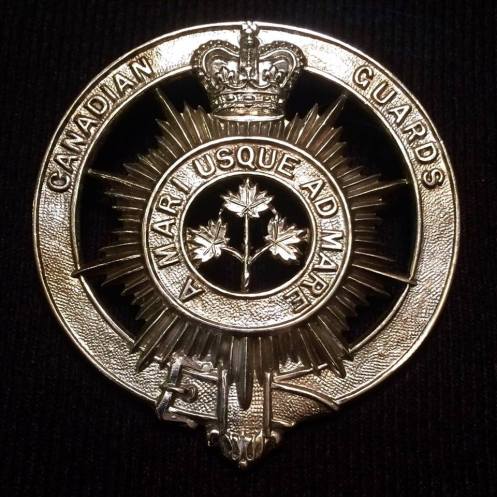
Canadian Guards Pipes and Drums 1954 – 1970
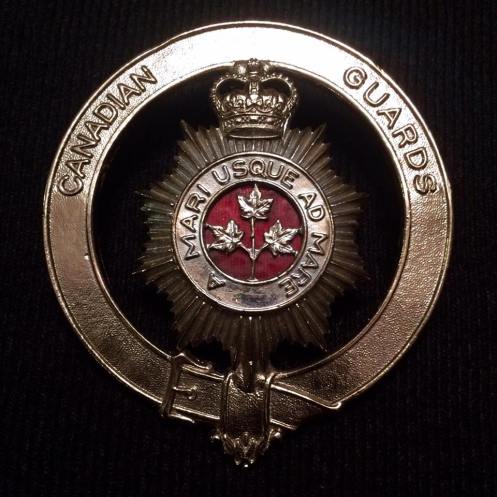
Canadian Guards Pipes and drums variation (Usually created for cost savings). This was the regiment’s regular enlisted soldiers badge adhered to a separate buckle. The band could buy the buckle part in greater numbers and would have to only go to the regiments badges readily available from the QM, you will see the same thinking with The Royal Canadian Regiment Pies and Drums and the Royal Military College.
In the 1970s the two Regular Force regiments, the Black Watch of Canada (Royal Highlanders) and the Canadian Guards were disbanded and with them went their Pipe Bands. The remaining regular regiments only had brass and reed bands. This almost wiped out piping in the regular army. This created a ripple effect throughout the Canadian Armed Forces (CAF) and the bases complained that they lost their pipes and drums, and therefore their musical support for Mess dinners, graduation parades, Church parades, change of commands and so on. This is what partly created the new “volunteer” band system we have today. The positions for P&D personnel were now under the control of the “Music Branch” now instead of the regiments. The pipers and drummers were offered other jobs within the CAF, such as clerks, cooks and so on. Throughout the mayhem a few were able to keep their jobs and join the ranks of the Music branch.
The end result was the modern setup, where the Pipes and Drums of the Black Watch at CFB Gagetown became the RCR Pipes and Drums, and, in 1993 the CFB Gagetown base P&D. The Canadian Guards P&D became the Special Service Force Pipes and Drums (now 2 CMBG, CFB Petawawa). The RCAF were already using this model of the volunteer bands and the Army followed suit.
CFB Borden Pipes and Drums was created when the CAF amalgamated the two schools of music (RCAF Station Rockcliffe) for pipes and drums and CFB Esquimault, or brass and reed).
The “Volunteer Band” model is (for the most part) one piper and one drummer (Sgt up to CWO) from the regular force posted to a base to provide musical support. The two members are trained to run and train music, logistics and administration of their respective volunteer bands and the volunteers are made up of other military personal (sometimes as a secondary duty), augmentees from the Reserve Force and even civilians. These bands work directly for base HQ.
Because of the base Pipes and Drums were an identity of their own now, they had to create a uniform. The RCAF bases were easy but now bands at CFB Petawawa, CFB Gagetown, and CFB Borden had to decide what kilt and badge to wear as a Highland Pipe Band.
At CFB Petawawa (the SSF) wore the black Stewart tartan. Oral history tells us the reasons for this is the Base Commander at the time was a Stewart. The Canadian Guard pipers wore the Royal Stewart as did all Guard’s units. The “black” Stewart was chosen to represent the lineage of the Black Devils (better known as the Devils Brigade from WW2) and the badge was to be a metal version of the unit’s brigade arm patch, When that unit was re-organized as the 2 CMBG they used the same idea for their badge and kept the same tartan.
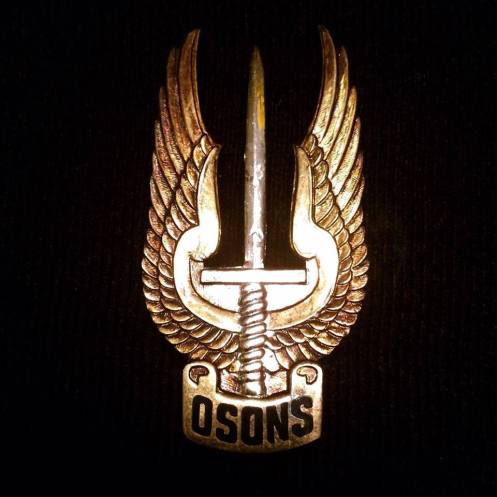
Special Service Force Pipes and drums 1977-1980. A nice badge W Scully maker marked.
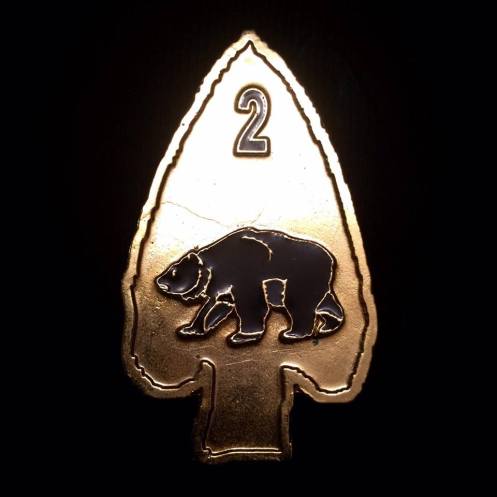
Pipes and drums of the 2 Canadian Mechanized Brigade Group 1995. This badge was short lived due to its weight and that it was attached by a slider. W Scully marked
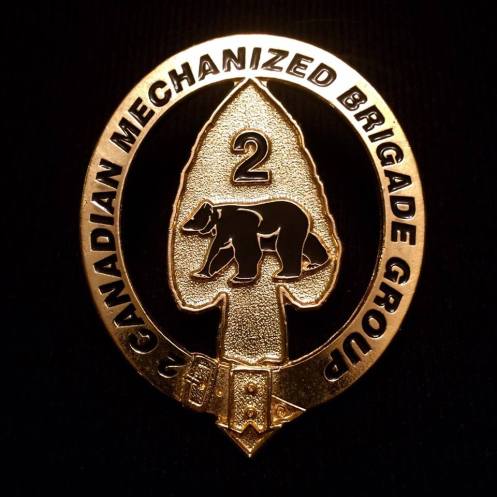
Pipes and drums of the 2 Canadian Mechanized Brigade Group (Current Badge).
At CFB Gagetown, The RCR pipes and drums (later the Base Gagetown P&D) wore the Canadian Army’s government tartan the “Maple Leaf”. The badge of the RCR, P&D was the regimental badge attached to a traditional Scottish buckle.
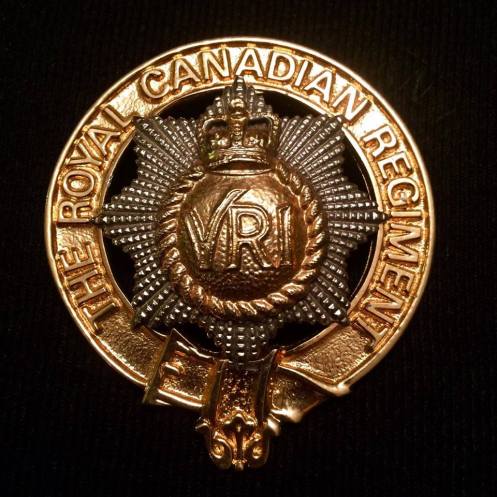
Pipes and drums of the Royal Canadian Regiment 1971-Pressent. The band now wears a cloth version. It’s worth mentioning that the RCR P&D is the only regiment left to have infanteers as pipers and drummers and do not hold any (0817 or 00160) musicians’ positions on their establishment.
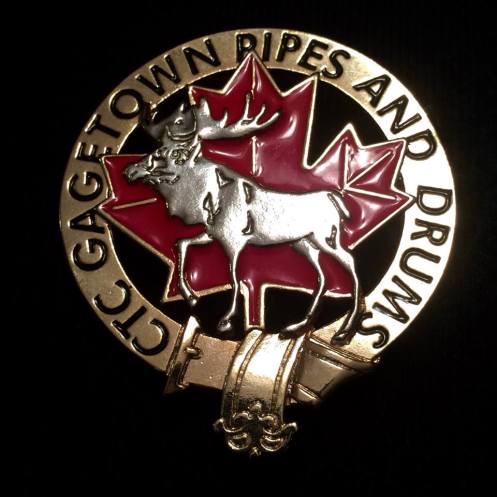
Combat Training Centre (CTC) Camp Gagetown Pipes and Drums 1993
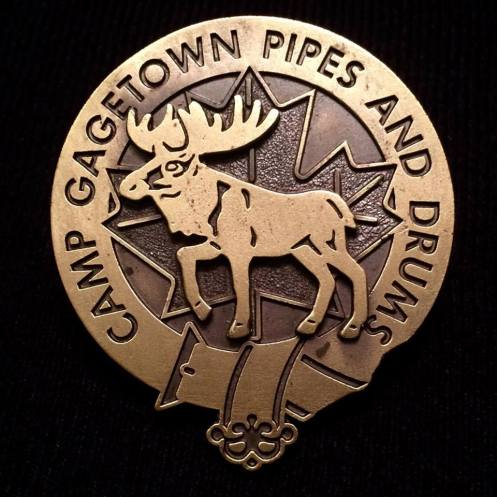
Pipes and Drums of the 3 Area Support Group (3ASG). CFB Gagetown
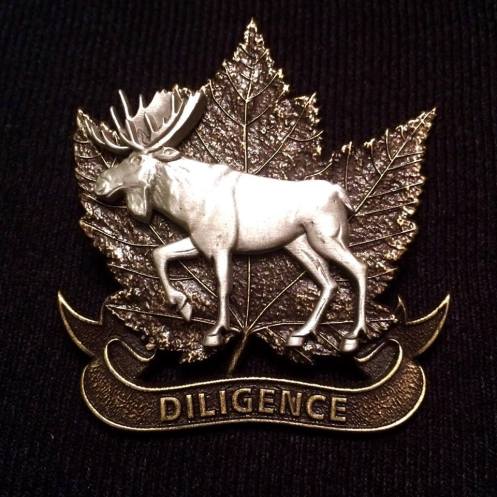
5th Canadian Division Support Base Gagetown 2011. (Current badge of the Band)
CFB Borden, P&D wear the Hunting Stewart Tartan because of the Grey and Simcoe Foresters regiment whom built the base in 1916 for the training of the CEF. The cap badge was the same as that for CFB Gagetown where they took the base crest and put it into the same belt style.
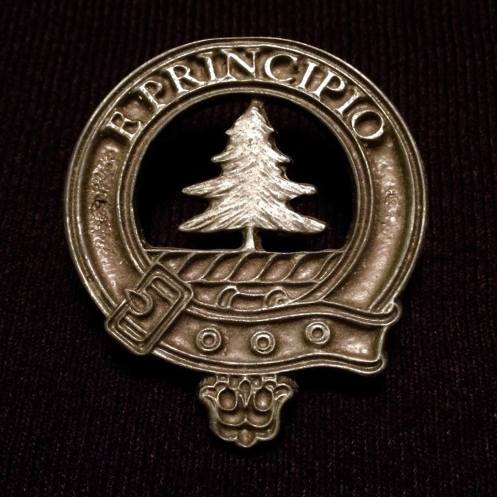
CFB Borden Pipes and Drums 1992-2012. This was a very poorly made badge. There was a need to create an improved badge.
The Pipe Majors and Drum Majors who formed these bands initially came from either the Canadian Guards or the Black Watch so it makes sense that the style of badges look similar to those of the original regiments. Although they were not authorized by DHH the designs were approved by the base commanders at the time and significant research was put into the final designs. No one yet has challenged these badges.
RCAF bases, such as CFB Trenton, Shearwater, Ottawa, Greenwood, North Bay, Cold Lake, Lahr (Germany) and others, wear the RCAF tartan and the Air Element badge. In the early years the bands, both Brass and Reed and Pipes and Drums, wore a silver badge to identify them as musicians. To this day the Pipes and Drums of 400 Squadron continue to wear the “kings crown” cap bade. This practice was challenged in the 1970’s and it was agreed that the band could wear these obsolete badges until supplies ran out. This will explain why so there exists so many different makes of the badge. While some collectors see these as fake, they’re just from different manufacturers.
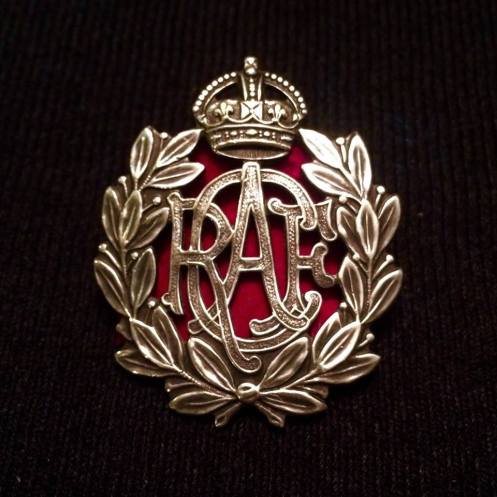
Bonnet and Glengarry badge for the RCAF Pipes and Drums
The badge for the Royal Military College pipes and drums was developed along the same style as the base badge.
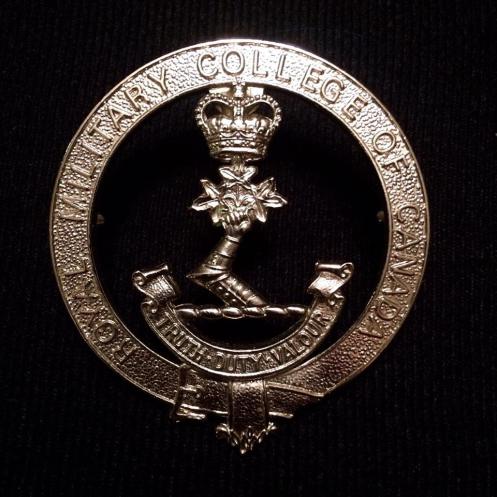
Pipes and Drums of the Royal Military Collage of Canada
In closing, although liberties existed throughout the CAF in the design and adoption of badges for the Pipes and Drums these can also be viewed as legitimate and authorized by Base Commanders.
Sgt Mark Passmore is a Regular Force (RCAF) Highland Musician and currently serving in the trade at CFLTC Music Division CFB Borden. He is an accomplished musician and an advanced collector of Highland cap badges.
You can rate this article by clicking on the stars below

Not a bad article. However, I want to add some information to the part about RCR P&D’s. For CFB Gagetown, it should be stated the the P&D’s were 2RCR. At some point 3RCR had a pipe band in Germany, as the PM for 2RCR from about 1986 to 1990 or thereabouts had been a piper in Germany with 3RCR. I was DM from Jul 87 to Aug 89. All pipers and drummers were 031 Infantry man with the exception of the PM and the Drum Sgt, who where 871(?) Muscian. Pipers would take the year long Pipe Major’s or “Master Blaster” course and on completion could await posting to any of the pipe bands in the CF if a PM position came open, at which point they would remuster to the Musician trade. All 031 Infmn pipers and drummers continued to do Infantry training in addition to their band duties in the Battalion. They had to complete all the same trade requirements as other soldiers in the Battalion for promotion.
As I had left the band by 1989, I do not know the ins and outs that occurred when the band became a base resource. However, I believe there was a period when there were two bands on base, the battalion’s P&D’s and the base band.
Some of this information might be already included, but the caption under the photo of the RCR hat badge was cut off, so it makes no sense.
The correct name of the regiment is “The Black Watch (Royal Highland Regiment) of Canada”.
And the title of this article makes no sense. Over a dozen Highland regiments of the Canadian Armed Forces have had regimental pipe and drum bands, but they’re not mentioned at all. Is the article only discussing Regular Force units? I can’t tell which group within the CF the author is trying to discuss.
Yes, the article is on “Reg Force” cap badges for “volunteer” Pipes and Drums … as title mentions, you could write a book on primary reserve Pipes and Drums, currently 16 Regiments and many disbanded before..
Gents. Having served in both SSF & 2 CMBG and having been the Band Officer for CTC Gagetown Pipes & Drum, I am very interested in purchasing those now disbanded units cap badges. Any idea on where I might find some of these? Random internet search gives me either the Airborne Regt Cap Badge or SSF Cloth Insignias